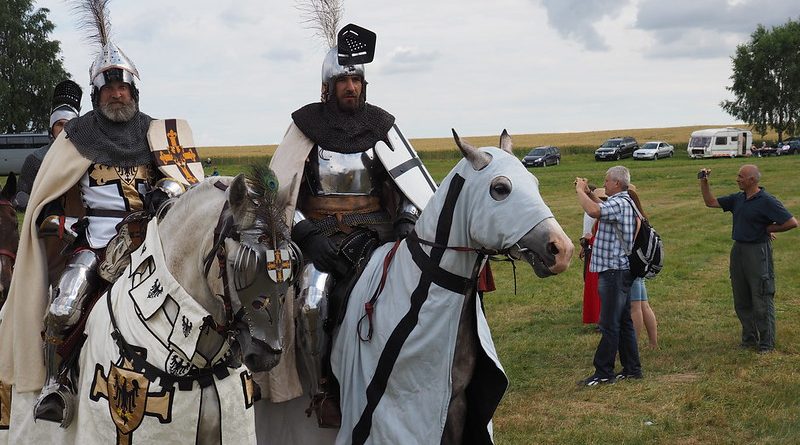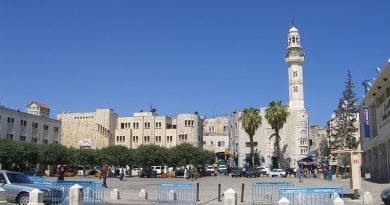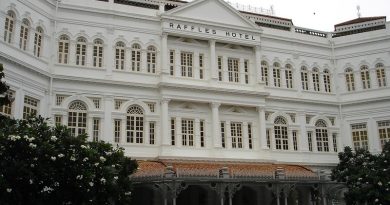The Teutonic Knights of Malbork Castle
The small and quiet town of Malbork would have probably never made it on a traveller’s must see map if it wasn’t for the gigantic brick Gothic fortress it its midst (a UNESCO World Heritage Site).
Built in 1272 on an area of 21 hectares, 250 meters wide and almost 700 meters long with a volume of 250,000m3, it is the largest Gothic fortress in Europe and simply awe-inspiring. It became the seat of the Grand Master in 1309 when they moved here from Venice, and from 1324 onwards it was the Capital of the State of the Teutonic Knights. Separated by moats, guarded by towers and drawbridges, it is highly symbolic for the many battles, conquests and power struggles in the region.
Known as Malbork in Polish since 1945, its original name is “Marienburg”, German for “Mary’s Castle”, named after their patron saint ‘Mary’. The builders of Malbork were the Teutonic Knights, or more precisely the Teutonic Knights of St Mary’s Hospital in Jerusalem, a German Roman Catholic Order in its origin. Scarcely less renowned than the mystical Knights Templars, the Teutonic Knights carried the spirit and traditions of the great military religious orders of the Middle Ages far into the modern period. No earlier date for the foundation of the order than 1190 is given on recognized authority, its actual beginning, like that of the other orders of its kind, being humble and obscure. The Hospitalers were at first a nursing order, and gradually became military; the Knights Templars were always solely military; while the Teutonic Knights were from the first both military and nursing. The Order had been created in Acre (present-day Israel). When this last stronghold of the Crusades fell to Muslim Arabs, the Order moved its headquarters to Venice before arriving in Poland.
The Knights wore white surcoats with a black cross. A cross pattée was sometimes used as their coat of arms; this image was later used for military decoration and insignia by the Kingdom of Prussia and Germany as the Iron Cross and Pour le Mérite. The motto of the Order was: “Helfen, Wehren, Heilen”, in English “Help, Defend, Heal. Contemporary chroniclers compare the Teutonic Knights with the mystic living creature seen by Ezekiel, having the faces of a man and of a lion, the former indicating the charity with which they tended the sick; the latter, the courage and daring with which they met and fought the enemies of Christ.
Being member of the Teutonic Knights meant adhering to severe rules that regulated all aspects of life. All the members lived in common; they slept in dormitories on small and hard beds; they took their meals together in the refectory, and their fare was meagre and of the plainest quality. They were required to attend the daily services in the church, and to recite certain prayers and offices privately. Without permission of their superior, no one could leave the convent, or write or receive letters. Their clothes, armor, and the harness of their horses were all very plain; all gold, jewels, and other costly ornaments being strictly forbidden. Yet arms and armour of the best material and horses of good breed were provided. When they marched to battle, each knight had three or four horses, and an esquire carried his shield and lance. The Teutonic Order had a distinct organization, but the grand master was elected from the class of the knights only.
The Order kept its stronghold in Catholic areas of Germany until the beginning of the 19th century, then Napoleon Bonaparte ordered its dissolution and it lost its secular holdings. It continued to exist as a charity and ceremonial institution, was outlawed by Hitler, and re-established in 1945. The Teutonic Knights have both been praised for their wisdom and puritan lifestyle, courage and compassion as well as criticized for their tyranny, blood thirst and elaborate spending.
Malbork Castle housed at times up to 3,000 brothers of the order, and their financial position was mostly favourable. The position of the Castle on the Nogat river allowed for collecting river tolls as well as easy access to trade goods coming from the Vistual River and the Baltic Sea. For many years they controlled the monopoly on the amber trade, Poland’s most valuable export, the gold of the Baltic Sea. When the city became a member of the Hanseatic League, many Hanseatic meetings were held there.
In the summer of 1410, the castle was besieged following the Order’s defeat by the armies of Władysław II Jagiełło and Vytautas the Great (Witold) at the famous Battle of Grunwald. Heinrich von Plauen successfully led the defense in the Siege of Marienburg (1410), during which the city outside was razed. In the mid 15th century the Order was struggling financially facing opposition from its cities for raising taxes to cover expenses of its wars against the Kingdom of Poland. Eventually, the weakened Teutonic Order sold the castle and transferred their headquarters to Königsberg, Kaliningrad today, in Russia and a couple of years later the Malbork Castle and the city surrendered to the Poles. The Jagellonian King Casimir IV entered the Castle triumphantly in 1457 after the Thirteen Years of War 1454-66.
The Malbork Castle Complex that you see today consists of three sections that were built in stages: the High Castle (1272-1300), the Middle Castle (1310-1400), Low or Outer Castle (ca. 1400-1447). The original Fore Castle was adapted as the Grand Master’s residence after his move in 1309 as administrative headquarters, the impressive palace of the Grand Masters was built in its southwest comer. The Great Refectory was built to the north of the palace; the north side of the Middle Castle was closed with a wing housing the hospital and the residence of the commander, and the chapel in the High Castle was enlarged, with a mortuary chapel of the Grand Masters dedicated to St Anne beneath the new presbytery.
Malbork Castle is generally accepted as an exceptional architectural Gothic work, and many of the building and handling methods demonstrated great skill and expertise. The castle is almost a mini-city in its own rights; it was built so as to make use of the full scale of medieval defense architecture, but its architectural and strategic planning incorporated the economic, religious and administrative function of the fortress as well. It was the social residence of the Grand Master, who was also head of state. The Castle was the residence for Polish Kings for many years after its conquest but fell into decay during Poland’s tumultuous history in the 17th and 18th century, but was then meticulously restored in the following 200 years. It was once again severely damaged in WWII and again restored using the earlier conservation techniques.




